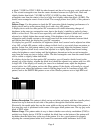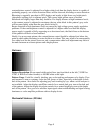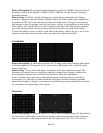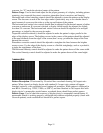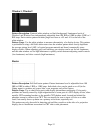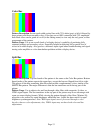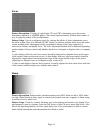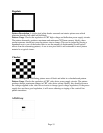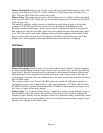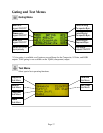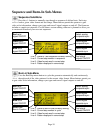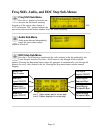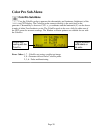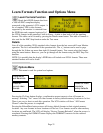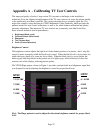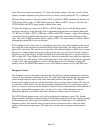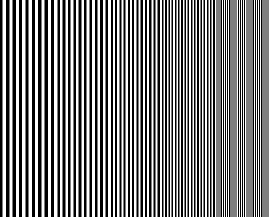
Page 16
Pattern Description: Pattern is an all white raster with two centered three-step gray scales. The
top gray scale steps are at 10%, 5%, and 0% while levels. The bottom gray scale steps are at
90%, 95%, and 100% while levels (from left to right).
Pattern Usage: This pattern can be used to check a display device’s ability to hold proper black
level at close to 100% APL. Check that you can see three separate levels of dark gray and black
in the top gray scale.
The pattern is primarily useful, however, in checking for peak-white clipping in fixed-panel
projectors (LCD, DLP, and D-ILA). In these devices, the projector bulb determines the
maximum amount of light output. If the contrast control is adjusted too high, not only the 100
IRE white levels, but also lower IRE signal levels will produce the same maximum light output
level. This will result in peak white clipping, with loss of high-brightness picture detail. Check
that you can see three separate levels of bright gray and white in the bottom gray scale. If the
brighter levels blend together, reduce the contrast control below the level of clipping.
Multiburst
Pattern Description: Pattern consists of five equal-width vertical segments. Vertical segments
are filled with alternating black and white stripes of one, two, three, four, and five pixel spacing
(right to left). This pixel spacing directly corresponds to the horizontal resolution of the format
being displayed. If, for example, the horizontal resolution of the current format is 640, the one
pixel spacing is such that, if it were continued across the entire screen, there would be 320 white
and 320 black stripes.
The exception to this is the 720 and 1080 HD formats, for which the 1920 pixel resolution, if
repeated across the screen, would result in a video signal frequency of 37 MHz, which exceeds
the SMPTE and EIA-specified format bandwidth of 30 MHz. In these formats, the stripes are at
two, four, six, eight, and ten pixel spacing.
Pattern Usage: Use to check a display device’s capability to produce sharply defined stripes, at
equal brightness, up to the format’s full resolution. This pattern is also useful in adjusting the
sharpness control. Starting with the sharpness control at its minimum setting, increase the control
until all five bursts are at equal brightness levels. Do not adjust the control high enough to cause
ghosting lines adjacent to the widest stripes.



